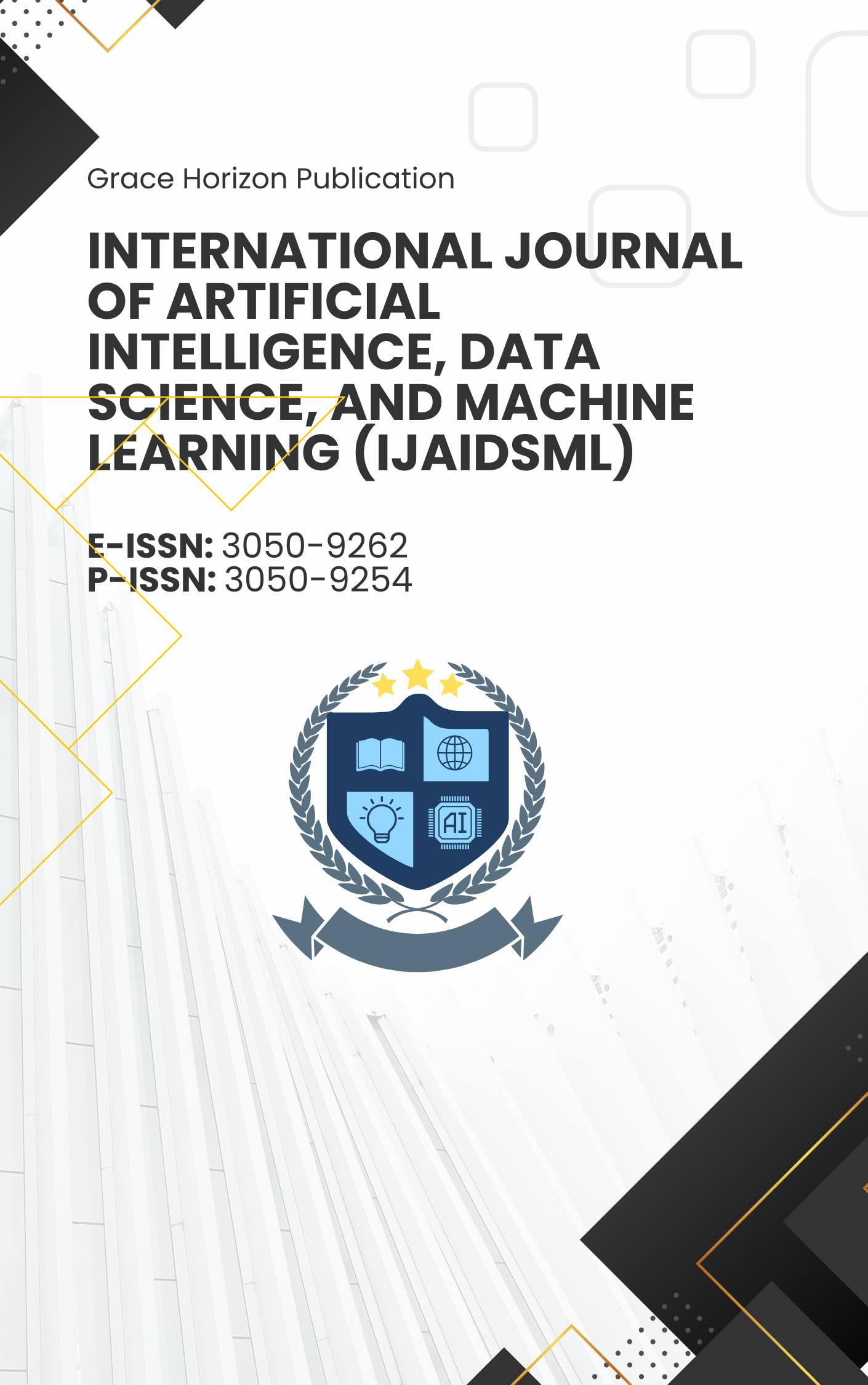Smart HR for Smart Enterprises: A Machine Learning-Based Approach to Payroll Automation and Time Optimization
DOI:
https://doi.org/10.63282/3050-9262.IJAIDSML-V6I3P113Keywords:
Machine Learning, Payroll Automation, Time Optimization, Human Resource Management, Smart Enterprises, Reinforcement LearningAbstract
Contemporary business environments require that the solutions in the field of HR are smart, fast, and eliciting linear growth. Typical approaches to handling Payroll and time management experience various problems, particularly scalability, error-prone, and ineffectiveness. The innovation under discussion is called “Smart HR”, the machine learning-based concept for combining payroll procedures and optimizing the human capital’s working time. This system uses supervised learning approaches for making payroll fraud and error prediction, learning for grouping workforce patterns, and reinforcement learning for scheduling. The hybrid approach has important advantages as it concerns time-saving, cost reduction and accuracy. It is an innovative module incorporating the ability to analyze employee work and attendance patterns and the prior payroll cycles. Furthermore, there is an option for a Time Optimization Module (TOM) that provides intended shift staffing, overtime prediction, and leave planning. The results reported below are from the proposed system for train and testing with data ceded by real-world corporate human resource management systems in various industries. The record reveals a 35% improvement in the payroll processing time, a 90% decrease in the error percentage of payroll, and a 27% improvement in the time-off strategies. Integration is easy with the current ERP and HRIS practices through the Application Programming Interface (API) to avoid the disruption of the working populace. This paper also thoroughly compares traditional rule-based systems and identifies possible ethical issues like privacy and system biases. Therefore, it can be said that machine learning can revolutionise Human Resource management concerning payroll and time management to promote organizational flexibility and employee satisfaction
References
[1] Bondarouk, T., & Brewster, C. (2016). Conceptualising the future of HRM and technology research. The International Journal of Human Resource Management, 27(21), 2652-2671.
[2] Chen, T., & Guestrin, C. (2016, August). Xgboost: A scalable tree-boosting system. In Proceedings of the 22nd ACM sigkdd International Conference on Knowledge Discovery and Data Mining (pp. 785-794).
[3] Jain, A. K. (2010). Data clustering: 50 years beyond K-means. Pattern recognition letters, 31(8), 651-666.
[4] Jordan, M. I., & Mitchell, T. M. (2015). Machine learning: Trends, perspectives, and prospects. Science, 349(6245), 255-260.
[5] Kavanagh, M. J., & Johnson, R. D. (Eds.). (2017). Human resource information systems: Basics, applications, and future directions. Sage Publications.
[6] Li, Y. (2017). Deep reinforcement learning: An overview. arXiv preprint arXiv:1701.07274.
[7] Martocchio, J. J. (2011). Strategic compensation: A human resource management approach. Pearson Education India.
[8] Minbaeva, D. B. (2018). Building credible human capital analytics for organizational competitive advantage. Human Resource Management, 57(3), 701-713.
[9] Sivathanu, B., & Pillai, R. (2018). Smart HR 4.0–How Industry 4.0 is Disrupting HR. Human Resource Management International Digest, 26(4), 7-11.
[10] Stone, D. L., & Dulebohn, J. H. (2013). Emerging issues in theory and research on electronic human resource management (eHRM). Human Resource Management Review, 23(1), 1-5.
[11] Sutton, R. S., & Barto, A. G. (1998). Reinforcement learning: An introduction (Vol. 1, No. 1, pp. 9-11). Cambridge: MIT Press.
[12] Deviprasad, S., Madhumithaa, N., Vikas, I. W., Yadav, A., & Manoharan, G. (2023). The machine learning-based task automation framework for human resource management in MNC companies. Engineering Proceedings, 59(1), 63.
[13] Hewage, H. A. S. S., Hettiarachchi, K. U., Jayarathna, K. M. J. B., Hasintha, K. P. C., & AN, S. (2020, December). Smart human resource management system to maximize productivity. In 2020 International Computer Symposium (ICS) (pp. 479-484). IEEE.
[14] Berdnikova, L. F., Mikhalenok, N. O., Frolova, V. A., Sukhacheva, V. V., & Krivtsov, A. I. (2020). Human resource management system development at smart-university. In Smart Education and e-Learning 2020 (pp. 327-337). Springer Singapore.
[15] Zhang, G., Atasoy, H., & Vasarhelyi, M. A. (2022). Continuous monitoring with machine learning and interactive data visualization: An application to a healthcare payroll process. International Journal of Accounting Information Systems, 46, 100570.
[16] Revolutionizing Payroll with AI and Machine Learning, Neeyamo, 2023. online. https://www.neeyamo.com/blog/revolutionizing-payroll-ai-and-machine-learning
[17] Jow, U. M., Kiani, M., Huo, X., & Ghovanloo, M. (2012). Towards a smart experimental arena for long-term electrophysiology experiments. IEEE transactions on biomedical circuits and systems, 6(5), 414-423.
[18] Kapp, S., Lauer, F., Beil, F., Rheinländer, C. C., Wehn, N., & Kuhn, J. (2021). Smart sensors for augmented electrical experiments. Sensors, 22(1), 256.
[19] Garg, S., Sinha, S., Kar, A. K., & Mani, M. (2022). A review of machine learning applications in human resource management. International Journal of Productivity and Performance Management, 71(5), 1590-1610.
[20] Manasa Gadapa. (2024). Optimizing HR Systems through Machine Learning: A Case Study on Automation and Cost Reduction in People Operations. International Journal of Intelligent Systems and Applications in Engineering, 12(4), 4782–4793. Retrieved from https://ijisae.org/index.php/IJISAE/article/view/7184
















